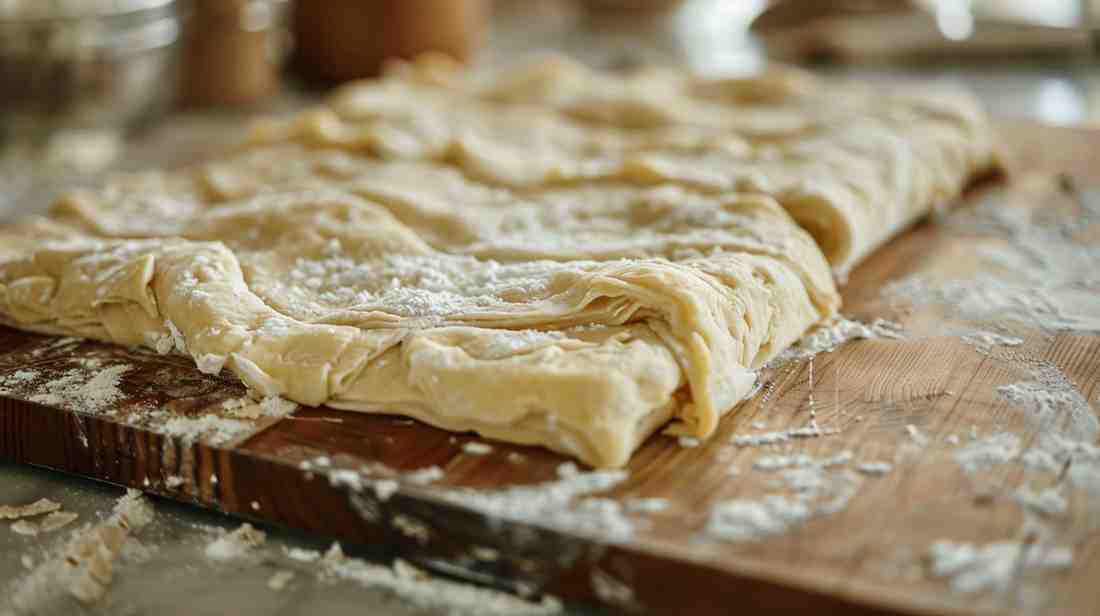Puff pastry is a light, flaky dough used in both sweet and savory dishes. Made with simple ingredients—flour, water, and butter—puff pastry transforms into delicate layers when baked. Its versatility makes it ideal for various baked goods, from elegant desserts to savory snacks
The Origins of Puff Pastry
Puff pastry has a rich history, dating back to ancient times. Although its exact origins remain unclear, the technique of layering dough and fat to create a flaky texture was well-known in several cultures.
Historical Background
- Ancient Techniques: Some evidence suggests that early versions of layered dough were used in ancient Egypt and Greece. These civilizations utilized dough layers filled with fats or oils.
- European Refinement: Modern puff pastry as we know it was refined in Europe, particularly in France during the 17th century. French chefs developed the technique of folding butter into dough to create the puffed, flaky layers.
- Contemporary Popularity: Puff pastry remains a cornerstone of French baking, while also being widely used around the world for both sweet and savory dishes.
Key Ingredients of Puff Pastry
Although puff pastry is made from simple ingredients, its success lies in the quality and technique. Each ingredient plays a crucial role in creating the perfect puff.
Core Ingredients
- Flour: All-purpose flour is typically used, providing structure to the dough. Some recipes may incorporate a higher-protein flour for added elasticity.
- Butter: Unsalted butter is preferred for puff pastry due to its rich flavor and ability to create layers when laminated into the dough.
- Water: Cold water is essential to bind the ingredients and prevent the butter from melting during the mixing process.
- Salt: A pinch of salt enhances the overall flavor without overpowering the delicate layers of the dough.
The Role of Butter
Butter is the key ingredient in puff pastry. Its moisture content evaporates during baking, creating steam that lifts and separates the dough into thin, crisp layers. High-quality, cold butter is essential for achieving the best results.
How Puff Pastry Works: The Science of Layering
Puff pastry’s characteristic flakiness comes from a process known as lamination, where butter is folded into the dough. The butter layers release steam during baking, causing the dough to rise and form hundreds of thin, crisp layers.
The Lamination Process
- Initial Dough: The dough is mixed, rolled out, and chilled. Butter is then incorporated by folding it into the dough, creating layers.
- Folding Technique: After the butter is added, the dough is folded over itself, rolled out, and folded again multiple times. This process creates the laminated structure.
- Chilling Between Folds: It’s important to chill the dough between folds to keep the butter firm and prevent it from melting into the dough.
How Layers are Formed
- Steam Generation: During baking, the water in the butter evaporates into steam, lifting the dough layers apart.
- Crisp Texture: As the layers rise and separate, they crisp up, forming the light, flaky texture puff pastry is known for.
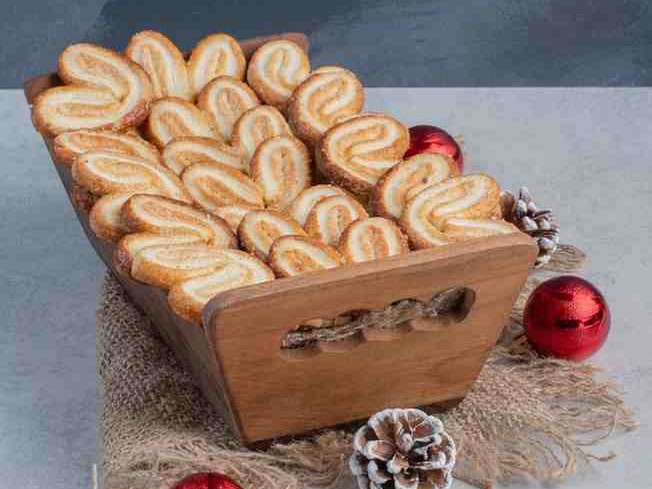
Health Considerations of Puff Pastry
While puff pastry is a delicious treat, it is high in fat and calories due to the large amount of butter used in its preparation. However, it can still be enjoyed in moderation as part of a balanced diet.
Nutritional Highlights
- Fat Content: Puff pastry is rich in fats, primarily from butter. These fats contribute to its delicious flavor and flaky texture.
- Carbohydrates: The flour in puff pastry provides carbohydrates, giving it structure and adding to its caloric content.
- Moderation: Puff pastry is best enjoyed occasionally due to its high fat and calorie content, but its light and airy texture makes even a small portion satisfying.
Tips for Healthier Puff Pastry
For those looking to enjoy puff pastry in a healthier way, some adjustments can be made without sacrificing too much of its characteristic flakiness.
- Use Less Butter: Reducing the amount of butter slightly can still yield a flaky pastry while cutting back on fat.
- Whole Wheat Flour: Using whole wheat flour or a blend of whole wheat and white flour can increase the fiber content and add a slightly nutty flavor.
Common Uses of Puff Pastry in Baking
Puff pastry’s versatility allows it to be used in a wide range of recipes, both sweet and savory. Its ability to rise and crisp up makes it ideal for many baked goods.
Sweet Recipes
- Palmiers: These delicate, sugary pastries are made by rolling puff pastry with sugar, then baking until golden and crisp. They are a perfect light dessert or snack.
- Fruit Tarts: Puff pastry provides a flaky base for fresh fruit tarts. The lightness of the pastry pairs well with custard and fruit fillings, creating a refreshing dessert.
- Mille-Feuille (Napoleon): This classic dessert layers puff pastry sheets with creamy fillings like pastry cream or whipped cream. The crisp, buttery layers of the pastry contrast perfectly with the smooth, rich filling, making it a show-stopping treat.
Savory Recipes
- Sausage Rolls: Puff pastry encases seasoned sausage meat in a crispy, flaky shell, creating a popular snack or appetizer.
- Vegetable Pies: Puff pastry serves as the perfect topping for savory vegetable pies, adding texture and richness to the dish.
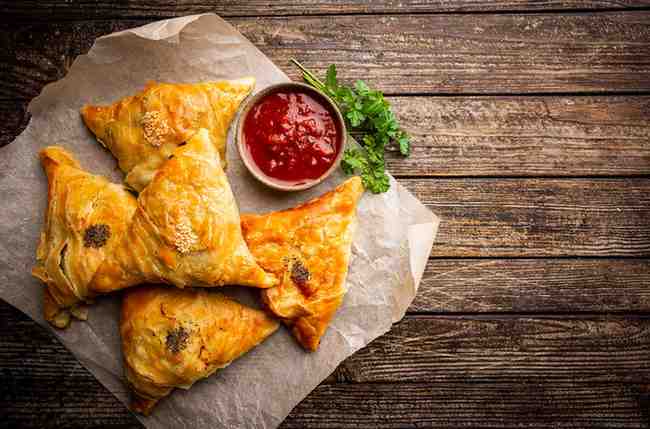
Tips for Perfect Puff Pastry
Achieving light, flaky layers requires attention to detail and proper technique. By following these tips, you can ensure your puff pastry turns out beautifully every time.
Use Cold Ingredients
Cold ingredients are key to successful puff pastry. Butter should be cold, and water should be ice-cold to prevent the butter from melting during the mixing process.
- Chill Everything: Keep the butter, flour, and even your rolling pin cold before starting. Cold butter helps create the distinct layers in puff pastry.
- Cold Water: Use ice-cold water when mixing the dough to maintain the right consistency.
Proper Folding Technique
Folding, also known as lamination, is crucial for creating the signature flaky layers. Each fold adds more layers of butter and dough, which puff up during baking.
- Multiple Folds: Typically, the dough is folded over itself multiple times (often 4 to 6 times). The more folds, the more layers the pastry will have.
- Roll Gently: When rolling out the dough, apply even pressure and avoid tearing it. Tears can cause butter to leak out, which affects the layers.
Rest Between Folds
Allowing the dough to rest between folds is essential for maintaining structure. It gives the gluten in the dough time to relax, preventing shrinkage or tough pastry.
- Chill Between Folds: After every two folds, refrigerate the dough for 20-30 minutes. This keeps the butter firm and ensures the dough doesn’t become too soft.
- Avoid Overworking: Handle the dough gently to avoid overworking it. Too much handling can make the dough tough and difficult to roll.
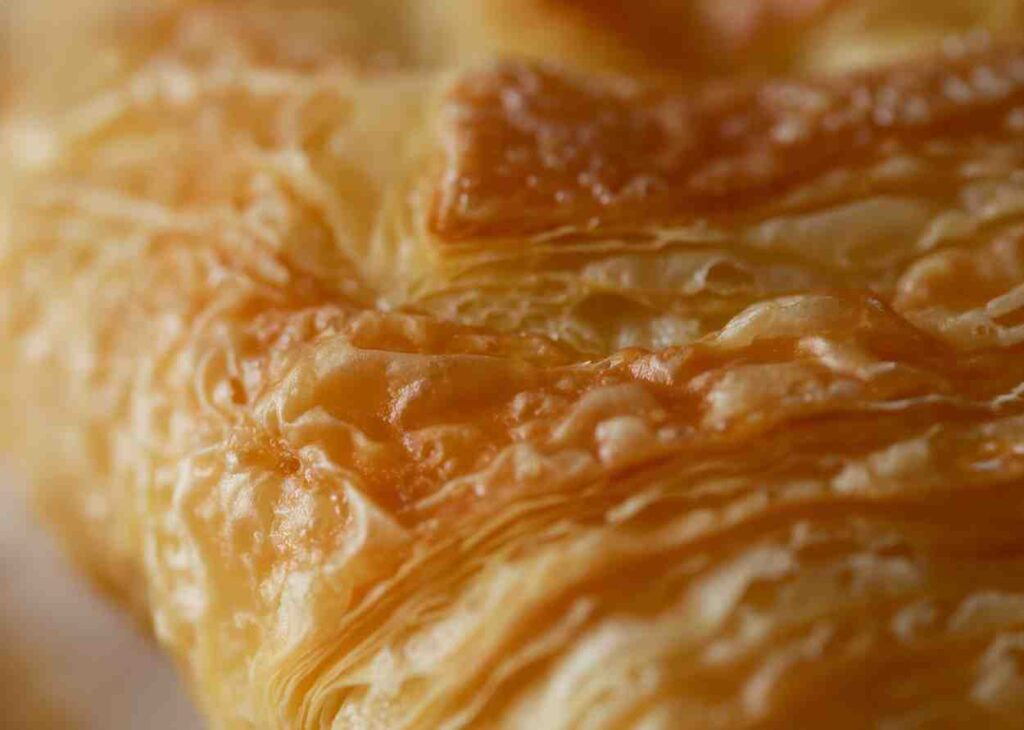
Troubleshooting Common Puff Pastry Problems
Even with the best intentions, issues can arise when working with puff pastry. Below are some common problems and solutions to help you troubleshoot.
Problem 1: Butter Leaks from the Dough
Butter leakage can happen if the butter melts or isn’t properly sealed within the dough. This can lead to a greasy, uneven texture.
Solution:
- Ensure Proper Chilling: Keep the dough and butter cold at all times. If the butter starts to soften, place the dough back in the fridge before rolling.
- Seal the Edges: When folding, ensure the edges are tightly sealed to prevent butter from escaping.
Problem 2: Pastry Doesn’t Rise
Puff pastry should puff up in the oven, creating light, flaky layers. If it doesn’t rise, the butter may have melted into the dough before baking.
Solution:
- Maintain Cold Conditions: Always refrigerate the dough before baking to ensure the butter remains solid. Preheat the oven to the proper temperature before placing the pastry inside.
- Check Rolling Thickness: Don’t roll the dough too thin; it should be about ¼ inch thick to allow room for the layers to rise.
Problem 3: Dough is Tough or Gummy
If the dough feels tough or gummy, it may be due to overworking the dough or not chilling it enough.
Solution:
- Rest the Dough: Let the dough rest between folding and rolling to prevent the gluten from tightening up. This will help maintain a light texture.
- Handle Gently: Avoid pressing too hard when rolling out the dough. Light, even pressure will create smooth layers.
Creative Puff Pastry Recipes
Puff pastry’s versatility allows for both sweet and savory applications. Here are a few creative recipes that highlight its potential in various dishes.
Sweet Puff Pastry Recipes
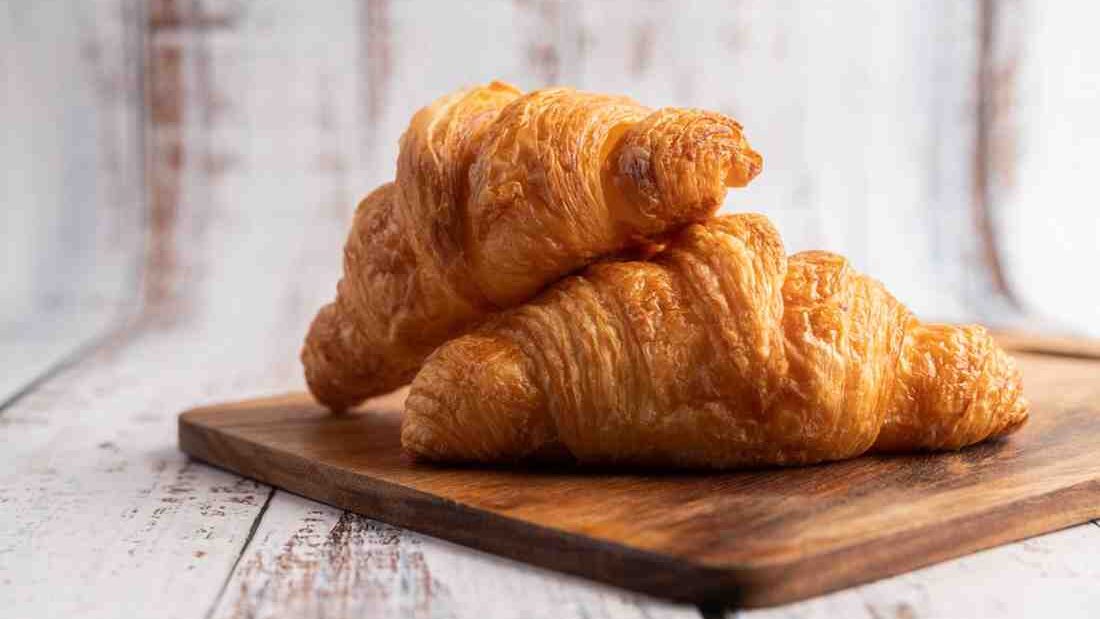
1. Chocolate-Filled Croissants
Chocolate-filled croissants combine the buttery flakiness of puff pastry with rich chocolate for a decadent breakfast or snack.
Ingredients:
- 1 sheet puff pastry (thawed)
- ½ cup semi-sweet chocolate chips
- 1 egg (beaten, for egg wash)
- Powdered sugar (for dusting)
Instructions:
- Prepare the Dough: Roll out the puff pastry to smooth it. Cut into triangles.
- Fill and Roll: Place chocolate chips on the wide end of each triangle and roll the dough toward the tip, forming a croissant shape.
- Brush with Egg Wash: Brush the croissants with the beaten egg to give them a golden finish.
- Bake: Preheat the oven to 375°F (190°C). Bake the croissants for 12-15 minutes, or until golden brown.
- Finish: Dust with powdered sugar before serving.
2. Apple Puff Pastry Roses
These apple puff pastry roses are both beautiful and delicious. Thin apple slices are rolled into the dough, forming delicate, rose-like shapes.
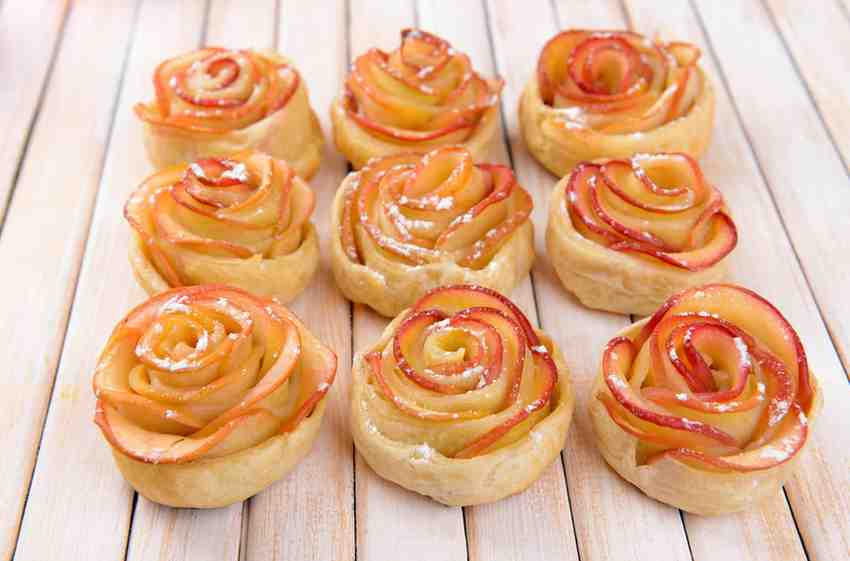
Ingredients:
- 1 sheet puff pastry (thawed)
- 2 apples (thinly sliced)
- 1 tablespoon cinnamon sugar
- 1 tablespoon apricot jam (for glazing)
- Powdered sugar (for dusting)
Instructions:
- Prepare the Apples: Microwave the apple slices for 30 seconds to soften them slightly.
- Roll the Pastry: Roll out the puff pastry and cut into long strips. Sprinkle with cinnamon sugar.
- Shape the Roses: Lay apple slices along the top edge of each strip, overlapping slightly. Roll the dough and apple slices into a rose shape.
- Bake: Preheat the oven to 375°F (190°C). Place the roses in a muffin tin and bake for 20-25 minutes until golden.
- Glaze and Serve: Brush the roses with warm apricot jam and dust with powdered sugar before serving.
Savory Puff Pastry Recipes
1. Puff Pastry Vegetable Tart
This savory vegetable tart uses puff pastry as a crisp, buttery base for seasonal vegetables and cheese.
Ingredients:
- 1 sheet puff pastry (thawed)
- 1 zucchini (sliced thin)
- 1 red bell pepper (sliced)
- 1/4 cup goat cheese
- 1 tablespoon olive oil
- Fresh thyme for garnish
Instructions:
- Prepare the Pastry: Roll out the puff pastry and place on a baking sheet. Prick the surface with a fork.
- Arrange the Vegetables: Layer the zucchini and bell pepper slices on top of the pastry. Crumble the goat cheese over the vegetables.
- Brush with Oil: Brush the vegetables with olive oil and sprinkle with thyme.
- Bake: Preheat the oven to 400°F (200°C). Bake the tart for 20-25 minutes, or until the pastry is golden and crisp.
2. Spinach and Feta Puff Pastry Bites
These spinach and feta bites are a perfect appetizer or snack, combining puff pastry’s flakiness with a flavorful spinach filling.
Ingredients:
- 1 sheet puff pastry (thawed)
- 1 cup spinach (cooked and drained)
- 1/4 cup feta cheese (crumbled)
- 1 egg (beaten, for egg wash)
Instructions:
- Prepare the Filling: Mix the cooked spinach and feta cheese in a bowl.
- Cut the Pastry: Roll out the puff pastry and cut into small squares.
- Fill and Fold: Spoon the spinach mixture onto each square. Fold the pastry over the filling and seal the edges with a fork.
- Brush with Egg Wash: Brush the tops with beaten egg.
- Bake: Preheat the oven to 375°F (190°C) and bake for 15-18 minutes until golden.
Tips and Notes for Successful Puff Pastry Recipes
| Tip | Description | Additional Notes |
|---|---|---|
| Keep Ingredients Cold | Always use cold butter and cold water to ensure the dough stays firm and the butter doesn’t melt. | Chill the dough in the refrigerator between folds to maintain the layers and prevent butter leakage. |
| Use Even Pressure When Rolling | Apply steady, even pressure while rolling out the dough to ensure uniform thickness. | Avoid pressing too hard or tearing the dough, which could cause uneven puffing in the oven. |
| Chill Between Folds | Rest the dough in the refrigerator for 20-30 minutes after every two folds to keep the butter cold. | Chilling prevents the butter from melting into the dough and helps develop the flakiness. |
| Don’t Overwork the Dough | Handle the dough gently to avoid overdeveloping the gluten, which can make the pastry tough. | Less handling results in a lighter, more tender texture. |
| Check Oven Temperature | Preheat your oven to a high temperature (typically 375-400°F) to ensure the dough puffs properly. | An oven that’s too cool may cause the butter to melt out of the dough before it has a chance to puff. |
| Avoid Over-Rolling | Roll the dough to the required thickness, usually about 1/4 inch, without making it too thin. | Rolling too thin will reduce the number of layers, resulting in less rise and flakiness. |
| Brush with Egg Wash | Brushing the top of the pastry with an egg wash gives it a golden, shiny finish. | Be careful not to let the egg wash drip down the sides, as this can seal the edges and prevent puffing. |
| Rest After Baking | Let puff pastry cool for a few minutes after baking to set the layers. | Cooling allows the layers to firm up, making the pastry easier to handle and serve. |

